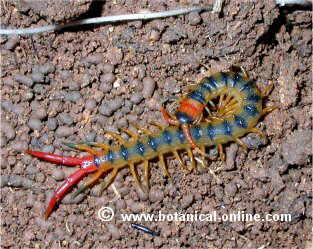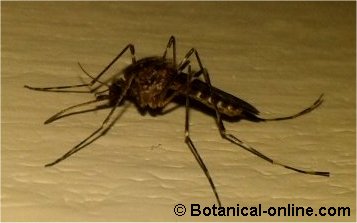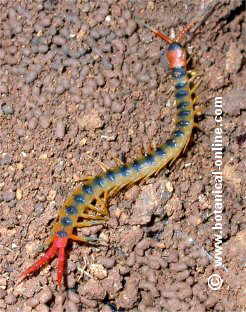Contents
What are ostriches?
Characteristics of ostriches
Common name: Common ostrich / ostrich
Scientific name: Struthio camelus
– Common names in other languages
- Español / Spanish: Avestruz
- Français / French: Autruche d’Afrique
- Català / Catalan: Estruç comú
- Galego / Galician: Avestruz
- Euskara / Basque: Ostruka
- Italiano / Italian: Struzzo
- Português / Portuguese: Avestruz
- Deutsch / German: Afrikanische Strauß
- Русский / Russian: Африканский страус
- Nederlands / Dutch: Struisvogel
- Română / Romanian: Struţ
- Svenska / Swedish: Struts
– Scientific classification:
Class: Aves
Order: Struthioniformes
Family: Struthionidae
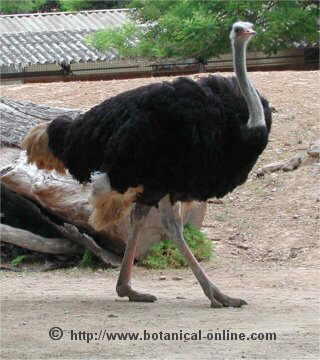
Features:
- Length: 2 m.
- Height: 75 – 150 kg.
- Weight: 2’8 m.
- Habitat: Plains and savannas.
- Geographic range: Africa.
- Behavior: Diurnal, terrestrial species.
- Food habits: Omnivore (herbs, fruits, seeds, insects, small vertebrates).
- Reproduction: Eggs laying: 20 eggs. Incubation: 40 days.
- Enemies: Human beings.
- Lifespan: 30 years in the wild. Up to 50 years in captivity.
Physical description of ostriches
Ostriches are the largest birds in the world. They are so big that their weight prevents them from flying. So the largest extant flying bird species is not the ostrich but the Andean condor.
They belong to the ratites group, along with rheas and emus. All these birds species are unable to fly and move around running.
Ostriches males are black, females have gray brown coloration. Their size is also different according to sex, because male specimens are larger than females.
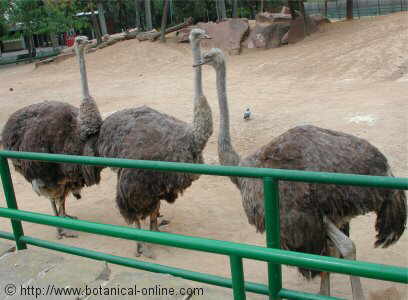
What are the adaptations of these birds?
Ostriches are terrestrial fast-running birds. These animals have two fingers per foot as race adaptations.
The internal finger of this bird species has a nail that they use during their nuptial fights against other males.
Ostrich reproduction
In front of females, males begin to make a series of contortions like extending their wings and moving their neck from left to right, This choreography is a courtship display that serves to focus the attention of females.
In spring, males mate with several females and they lay eggs in the same nest. Each female lays 20 eggs, but only one female incubates the eggs each time, together with the male. Both members take turns in the incubation of the eggs.
How is the behavior of these animals?
In the same habitat, wildebeest and ostriches coexist, so that both species are associated to protect themselves from predators. Each one has developed a sense: wildebeest the sense of hearing and the smell, while common ostriches, have a powerful sight.
What enemies do these birds have?
Ostriches have virtually no natural enemies due to their large size and because they are quick creatures.
Human beings could practically be considered the only common ostrich enemies.
![]() More information on other wild animals.
More information on other wild animals.


